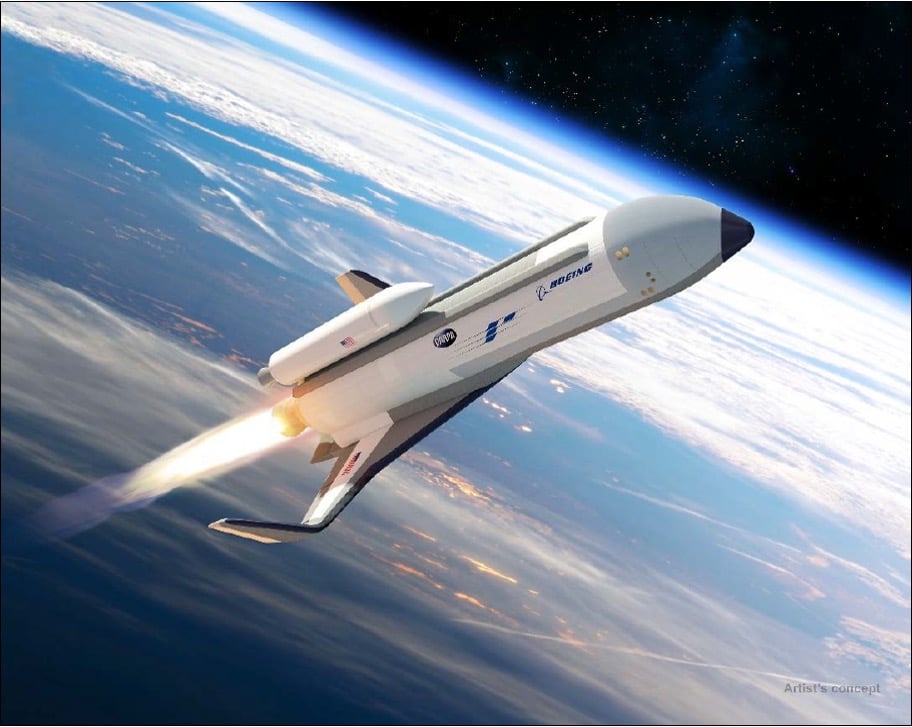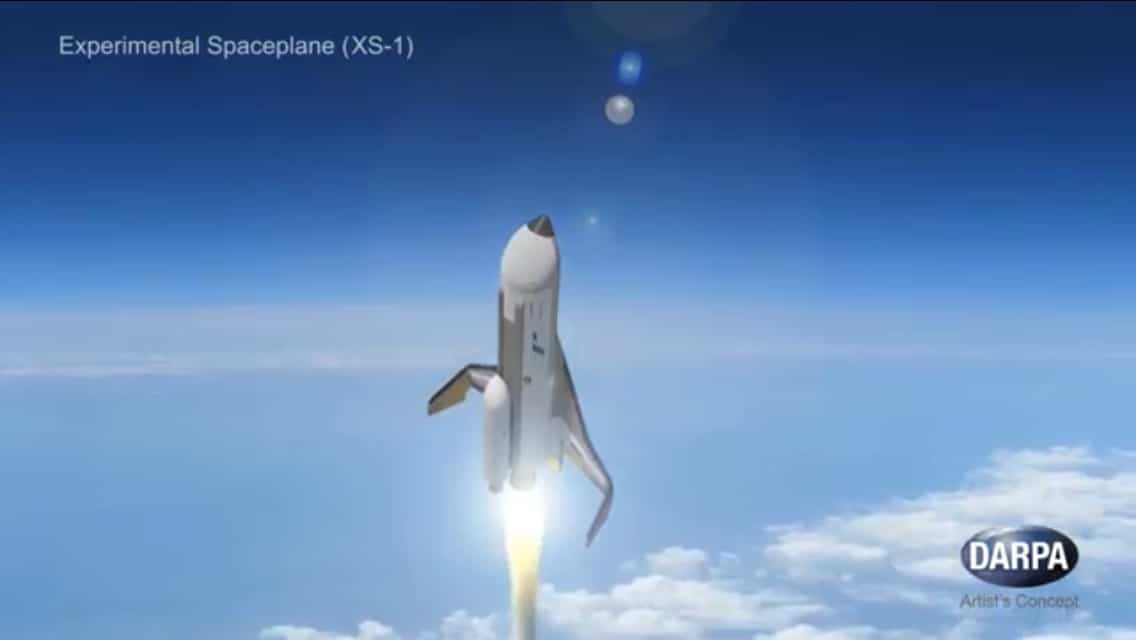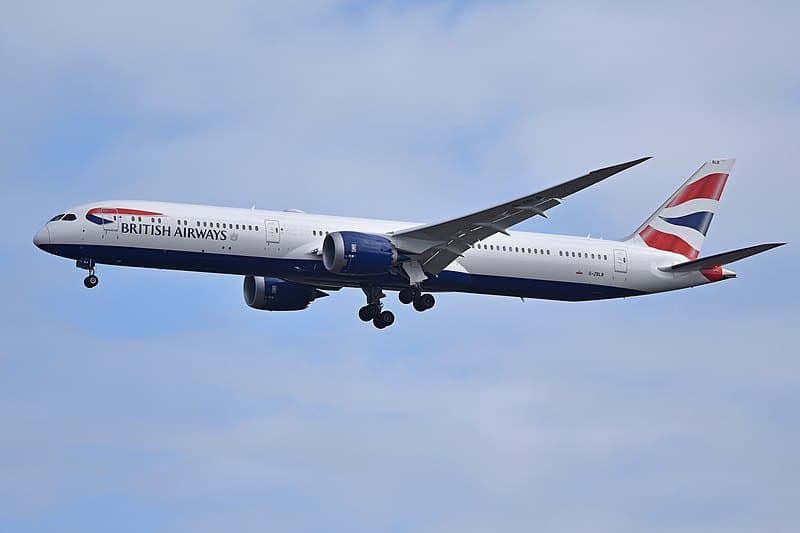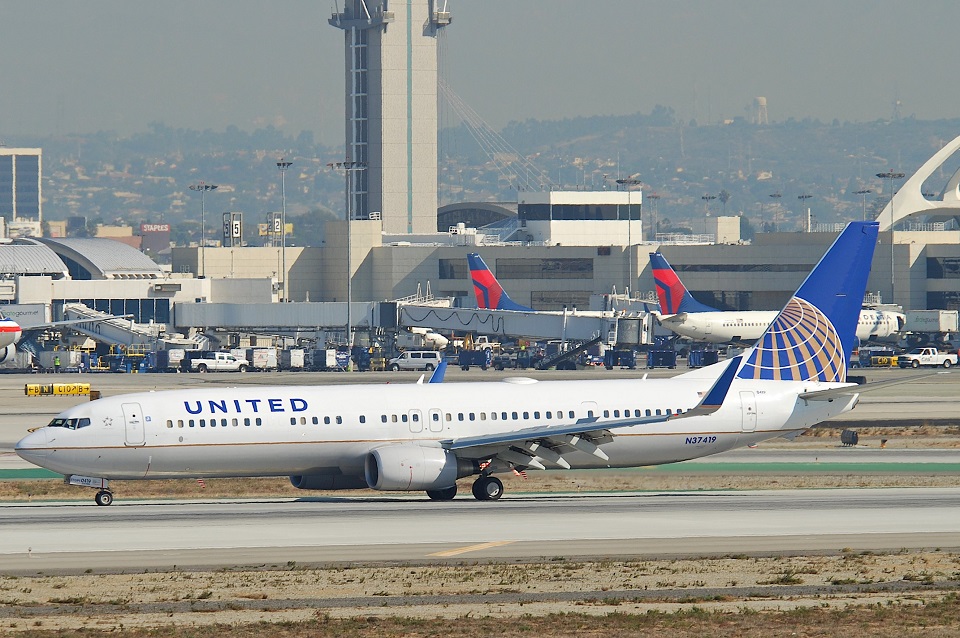Aviation
DARPA has selected The Boeing Company to build its Experimental Spaceplane (XS-1)

DARPA has selected The Boeing Company to complete advanced design work for the Agency’s Experimental Spaceplane (XS-1) program, which aims to build and fly the first of an entirely new class of hypersonic aircraft that would bolster national security by providing short-notice, low-cost access to space. The program aims to achieve a capability well out of reach today—launches to low Earth orbit in days, as compared to the months or years of preparation currently needed to get a single satellite on orbit. Success will depend upon significant advances in both technical capabilities and ground operations, but would revolutionize the Nation’s ability to recover from a catastrophic loss of military or commercial satellites, upon which the Nation today is critically dependent.
“The XS-1 would be neither a traditional airplane nor a conventional launch vehicle but rather a combination of the two, with the goal of lowering launch costs by a factor of ten and replacing today’s frustratingly long wait time with launch on demand,” said Jess Sponable, DARPA program manager. “We’re very pleased with Boeing’s progress on the XS-1 through Phase 1 of the program and look forward to continuing our close collaboration in this newly funded progression to Phases 2 and 3—fabrication and flight.”
The XS-1 program envisions a fully reusable unmanned vehicle, roughly the size of a business jet, which would take off vertically like a rocket and fly to hypersonic speeds. The vehicle would be launched with no external boosters, powered solely by self-contained cryogenic propellants.


Upon reaching a high suborbital altitude, the booster would release an expendable upper stage able to deploy a 3,000-pound satellite to polar orbit. The reusable first stage would then bank and return to Earth, landing horizontally like an aircraft, and be prepared for the next flight, potentially within hours.
In its pursuit of aircraft-like operability, reliability, and cost-efficiency, DARPA and Boeing are planning to conduct a flight test demonstration of XS-1 technology, flying 10 times in 10 days, with an additional final flight carrying the upper-stage payload delivery system. If successful, the program could help enable a commercial service in the future that could operate with recurring costs of as little as $5 million or less per launch, including the cost of an expendable upper stage, assuming a recurring flight rate of at least ten flights per year—a small fraction of the cost of launch systems the U.S. military currently uses for similarly sized payloads. (Note that goal is for actual cost, not commercial price, which would be determined in part by market forces.)
To achieve these goals, XS-1 designers plan to take advantage of technologies and support systems that have enhanced the reliability and fast turnaround of military aircraft. For example, easily accessible subsystem components configured as line replaceable units would be used wherever practical to enable quick maintenance and repairs.
The XS-1 Phase 2/3 design also intends to increase efficiencies by integrating numerous state-of-the-art technologies, including some previously developed by DARPA, NASA, and the U.S. Air Force. For example, the XS-1 technology demonstrator’s propulsion system is an Aerojet Rocketdyne AR-22 engine, a version of the legacy Space Shuttle main engine (SSME).
XS-1 Phase 2 includes design, construction, and testing of the technology demonstration vehicle through 2019. It calls for initially firing the vehicle’s engine on the ground 10 times in 10 days to demonstrate propulsion readiness for flight tests.
Phase 3 objectives include 12 to 15 flight tests, currently scheduled for 2020. After multiple shakedown flights to reduce risk, the XS-1 would aim to fly 10 times over 10 consecutive days, at first without payloads and at speeds as fast as Mach 5. Subsequent flights are planned to fly as fast as Mach 10, and deliver a demonstration payload between 900 pounds and 3,000 pounds into low Earth orbit.
Another goal of the program is to encourage the broader commercial launch sector to adopt useful XS-1 approaches, processes, and technologies that facilitate launch on demand and rapid turnaround—important military and commercial needs for the 21st century. Toward that goal, DARPA intends to release selected data from its Phase 2/3 tests and will provide to all interested commercial entities the relevant specs for potential payloads.
“We’re delighted to see this truly futuristic capability coming closer to reality,” said Brad Tousley, director of DARPA’s Tactical Technology Office (TTO), which oversees XS-1. “Demonstration of aircraft-like, on-demand, and routine access to space is important for meeting critical Defense Department needs and could help open the door to a range of next-generation commercial opportunities.”

Aviation
Air India’s B747 Makes Its Final Journey, Waving Farewell to Fans

In a poignant moment marking the end of an era in aviation history, Air India’s iconic Boeing 747 aircraft, affectionately known as the ‘Queen of the Skies,’ embarked on its ultimate journey from Mumbai’s international airport.
The departure, bound for Plainfield, USA, where it will undergo dismantling and part-stripping under the ownership of American AerSale, signals the closure of a storied chapter for the airline.
Once revered for transporting dignitaries ranging from prime ministers to presidents, the Boeing 747 has etched itself into aviation lore. Yet, as airlines worldwide pivot towards more contemporary and cost-effective aircraft, Air India’s decision to bid farewell to its remaining Boeing 747s reflects the pragmatic realities of today’s aviation landscape.
The sale of these majestic planes to AerSale represents a strategic move by Tata Group, Air India’s new custodian, towards optimizing operational efficiency and embracing modern industry standards. Out of the four aircraft sold, two will be repurposed into freighters, while the remaining pair will be meticulously disassembled to salvage valuable components.
The final flight from Mumbai witnessed a touching tribute as pilots performed a traditional ‘Wing Wave,’ symbolizing the conclusion of the Boeing 747‘s distinguished service with Air India. This poignant gesture encapsulates the deep sentiment attached to the aircraft’s departure and its significant contribution to the airline’s legacy.
As the Boeing 747 embarks on its journey to Plainfield, USA, nostalgia permeates the air, evoking memories of its maiden flight on March 22, 1971. Over five decades, Air India operated a total of 25 Boeing 747s, each leaving an indelible mark on the annals of aviation history.
Middle East
British Airways Resumes Daily Flights to Abu Dhabi, After 4-Year hiatus

British Airways made its way back to Abu Dhabi, landing at Zayed International Airport. Following a four-year break in service, both crew and passengers were greeted with enthusiasm.
In the summer of 2024, British Airways plans to launch a daily route, utilising a Boeing 787-9, from London Heathrow to Abu Dhabi. The new route enhances ties between the UAE and the UK and expands vast worldwide network, catering to passengers who may be visiting friends and family or travelling for business.
Arriving in Abu Dhabi at 08.30+1, flight BA073 to Abu Dhabi leaves London Heathrow at 22.25. Departing at 10.10 and landing at London Heathrow at 15.20 is the inbound flight (BA072).
The chief executive officer and managing director of Abu Dhabi Airports, Elena Sorlini, stated: “We are delighted to welcome British Airways to Zayed International Airport. Their daily schedule is expected to improve connectivity and stimulate travel and business.” Visitors may experience the dynamic capital of the United Arab Emirates like never before at our brand-new, award-winning, state-of-the-art terminal, where they will be welcomed with the best kind of Emirati hospitality.”
Flight schedule:
| London Heathrow (LHR) to Zayed International (AUH)All times are local | ||||||
| Season | Flight number | Departing LHR | Arriving AUH | Flight number | Departing AUH | Arriving LHR |
| Summer ‘24 | BA73 | 22:25 | 08:30+1 | BA72 | 10:10 | 15:20 |
| Winter ‘24 | BA73 | 22:25 | 09:30+1 | BA72 | 11:10 | 15:20 |
Aviation
FAA investigation: Passenger seated in Captain’s seat inside cockpit at cruising altitude

A viral video capturing a startling moment aboard a United Airlines charter flight from Denver to Toronto has triggered a federal investigation.
The footage, initially shared on social media by Hensley Meulens, the hitting coach for the Colorado Rockies baseball team, depicts a member of the coaching staff seated in one of the pilot seats while the aircraft was in mid-flight.
In his caption, Meulens expressed gratitude to the captain and first officer for allowing him this unusual experience. The video, filmed by another passenger, reveals the cockpit door open, and at one point, a third passenger briefly enters the flight deck. Alarmingly, during this time, the captain was absent from the cockpit.
Despite the flight being a private charter operated by United Airlines, company and Federal Aviation Administration (FAA) regulations strictly prohibit passengers from entering the cockpit during flight or leaving the flight deck unsecured.
United Airlines swiftly responded, expressing deep concern over the incident. A spokesperson emphasized that the video depicted an unauthorized person in the flight deck at cruising altitude with the autopilot engaged, constituting a clear violation of safety and operational policies.
The FAA confirmed that it is actively investigating the incident, highlighting that unauthorized access to the flight deck during flight is a violation of federal regulations. The agency assured that it is taking the matter seriously and will conduct a thorough examination to ensure compliance with aviation safety standards.






















